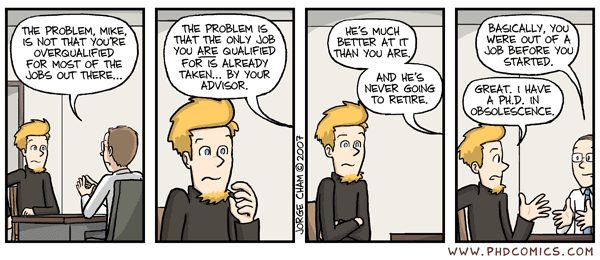During the bull runs, the people in the Bitcoin space on average tend to be noobs. They not only have no idea what they’re doing, but are often pretty confused by the different propaganda arms of various altcoin communities. They see the number go up in Bitcoin and start thinking, where else is the number going up?
It’s a reasonable question to most beginners, but unfortunately, the answers are either purposefully ignored or hand-waved away in the search for yield. It’s tiring to explain why altcoins are centralized, why the use-cases they claim haven’t worked and that their engine is printing their own money, speculating and gambling. This is the good fight that we all engage in to help all the newcomers not get burned the way we once were.
We’re quickly getting to the point where we might be entering a permanent influx of new people. These questions won’t just be popping up during bull runs, but for the rest of Bitcoin’s life and we should get prepared for what that’s going to be like.
Years ago, my wife used to beg me to not talk about Bitcoin to our friends because I was boring them. This was, of course, during a bear run and most people were a bit amused at best and uncomfortable at worst. During bull runs, however, Bitcoin would come up seemingly everywhere I went and we’re quickly nearing a time when noob questions are going to dominate conversation and will be a permanent part of the cultural zeitgeist. This is what an Eternal September is. We’re finally at a time when society itself will level up on its knowledge of Bitcoin.
So what will such a world look like? What will be our role? I suspect that it’ll be much like the 1993-96 years with the internet when many people had heard of the internet but hadn’t actually used it. There will have to be a lot of explaining and pleading to try it before making hasty judgments. In other words, we’re going to have to be patient and teach as much as we can, because like it or not, we’re all going to be Bitcoin experts among our friends.
Of course, that means we’ll have some opportunities as well to make this experience as clean and easy as possible and this is where new businesses that we haven’t yet thought of will emerge. I hope you’re ready because Bitcoin is about to become a permanent part of society.
Bitcoin
The activation debate for Taproot seems to be over and the full report of the meeting is here. BIP8 is now the consensus (block height instead of timestamp), with a 1 year timeout should the miners not signal readiness. What happens if they don’t signal readiness is still up for debate which is called “Lockin on Timeout.” If set to true, Taproot would activate regardless, if set to false, Taproot would not activate after a year. Regardless, Taproot will likely start being available for miners to signal within the next 6 months. Given that mining pools representing 91% of total hashing power on the network seem to be in favor of this upgrade, I suspect that Taproot will signal for 2 weeks, or 4 weeks at the most before the activation countdown happens. This likely means that we get Taproot sometime around summer to fall of this year.
Speaking of Taproot, there’s a discussion on how Schnorr Signatures needs its own BIP32 derivation path on bitcoin-dev. There are some gotchas when it comes to Schnorr and mixing them with ECDSA that developers need to be aware of in that using the same key for both may add some risks in leaking private key information. Thus, using a completely separate BIP32 derivation path is necessary to avoid this potential vulnerability. This will need to get hammered out before Taproot activation so that wallet developers can get started implementing pay-to-taproot features in their wallets.
Tadge Dryja has a demo of his Utreexo concept. The idea behind Utreexo is that a Merkle tree is used in lieu of the UTXO set as a way to run a pruned node. Thus, each UTXO being spent can be located in the Merkle tree and a proof sent to show its validity, making storage of the UTXO set unnecessary. The tradeoff here is that less storage is needed (less than a few KB!) but more bandwidth is needed (for Merkle Proofs). For phones with unlimited data but limited storage, this may be a nice tradeoff for wallet devs to consider.
Andrew Poelstra has published an article on how to use Taproot for covenants. Beware, the math is intimidating unless you know Elliptic Curves and groups, but the potential of adding just two op codes to make covenants is pretty amazing. If you don’t know what covenants are, they’re ways to restrict a future owner from spending the Bitcoin unless it meets some requirements. If you can stomach the math and probably having to read the article at least several times, this is well worth learning and reasoning about with regard to the potential applications. From a security perspective, covenants have the potential to make it so that there are restrictions even if the private key is stolen. I look forward to reading more of this series.
Alex Gladstein has a great video that’s been produced by Reason TV where he goes over why Bitcoin is so important for financial freedom around the globe. I found the video inspiring and I am going to use it as one of the first videos to send to people who think it’s all just for drugs and ransomware. There’s some talk of translating the video and for those of you that are able, I would encourage you to submit translations to Youtube as subtitles.
Economics, Engineering, Etc.
Nic Carter gives the mainstream media a good fisking about the Tether FUD. He gives a good overview of data integrity standards and how most exchanges simply don’t provide accurate data. He then goes on to question the Tether FUD given that the liquidity calculations rely on said data and condemns the publications which then rely on the Tether FUD report for their own reporting. Of course, much of the Tether FUD is moot given the announcement by Bitfinex that it no longer owes Tether anything.
Glassnode has an article on the Bitcoin wealth distribution. The conclusion from the report is that there are more addresses holding Bitcoin, but that whales, or what they conclude are institutional investors, are increasing in number. This indicates that this runup really is institutional and we probably have a lot more running up to go.
Aleks Svetski has started a series that looks at Bitcoin through the lens of Jordan Petersen’s 12 Rules for Life. This one focuses on territory/property rights and how that affects us on a biological level, much like Petersen’s first rule. If you’re a fan of both, this series will be thought-provoking and fun to read.
Beautyon has an article on what a dystopian authoritarian government would do to Bitcoin. It’s hard to tell if the article actually describes a real country right now or is meant to be a prediction of things to come, but regardless, the message is the same. We need to prepare now to resist the oppression, censorship, and confiscation that’s coming.
William Clemente III argues that this halving cycle is fundamentally different than the last two. His argument comes down to the clear division of teams, the dollar hegemony versus the rest of us that live under its burdensome rule. I suspect that there is something like a class consciousness developing about where we are on the monetary hierarchy and there’s merit in this thought that this may finally stop the dreaded crash that we’ve now com to expect. That said, there are other explanations of what the Bitcoin cycle is caused by and we’ll have to wait to find out if this is true.
Visa now has an API for institutional clients to buy/sell/trade crypto. This is not for consumers but for their institutional clients that want asset exposure and they’re using Anchorage as their custody provider. It remains to be seen whether they can get sufficient liquidity on their platform to make this a viable service, but they’re undoubtedly servicing a very hot market.
Another week, another DeFi exploit. This after they voted to inflate the supply by 20%.
Another week, another “blockchain not Bitcoin” organization being scuttled.
Podcasts
My podcast this week was with Jameson Lopp. We talked about software engineering, how it’s different than what’s taught in college and why security is particularly important in Bitcoin.
I was on Tone’s show to talk Visa, Taproot and a bunch of other stories. I spent a little too much time on Clubhouse this week getting acquainted on the platform. I’ll have a review of this newsletter on Monday at noon. Please follow me @jimmysongbtc on Clubhouse. I have some interviews coming up to promote my book:
Fiat delenda est.













Great article! Thanks!